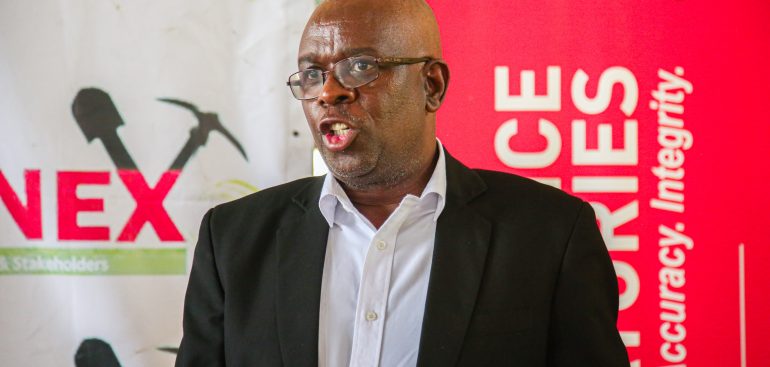Small-scale miners have been urged to make use of mining technology to improve their mining operations towards the realisation of the $12 billion mining industry by 2023.
Speaking during the Minex Northen Region expo held in Glendale recently Shamva Mine Technical Services Manager Brighton Bumhira said sustainable mining ensures economic development.
“Our mining should be sustainable and in line with sustainable development goals. As miners, we need to leverage technology to ensure sustainable development. In our mining, we are looking at ensuring that people are safe, we are making a profit and we are protecting the environment,” he said.
He elucidated the standards and processes that should be followed in order to have a clear understanding of minerals saying geological surveys, mapping and sampling are key in mining.
“For us to leverage on mining, there is so much that has been said about mining including the standards that should be followed. The first on mining is exploration. When people hear about exploration they think about huge sums of money but exploration has its stages, as miners there are things we can afford and some we cannot afford.
“This nation has been well educated, if you go to Midlands State University there are geologists, the University of Zimbabwe has geologists and at the Bindura University of Technology, they are equally introducing geology. So these are the people that we should use or we should try to use or engage to help us.
“ What we need to start doing before mining is to do a geological survey of the area we will be mining. There are books found on geological survey that explain the minerals found in various parts of the country. If you see someone looking for platinum in Bindura that means the person is lost so there is basic information that they should look for as a miner. If you don’t understand what’s in the book there are professionals across the institutions I have mentioned who can be of help.
“After the stage, you should look for someone to give you a basic understanding of the minerals from the surface to give you directions, and give you a basic map. It doesn’t cost a lot of money for laboratory sampling, it’s only US$15 if you go to Ruwa.
“If you do that you can now know if you have a sign of values based on the mapping and sampling. After mapping and sampling, you need to know how deep your ground is, if you have money then you go to a borehole and drilling. This gives you the shape of your ore body leading to sustainable mining.
” We should not compromise the future of those who will come after us. Let’s not mine to a point where we destroy our rivers, and vegetation even to an extent where we cannot mine what has been left on the ground,” he said.
Sustainable mining reduces the negative environmental, social, and governance impacts of mining operations. Technological innovations have revolutionized the mining industry in numerous ways. In particular, there is increased automation, the use of machine learning and Artificial Intelligence, and general digitization of the processes involved. Although the improvement and utilization of the new technologies create a massive positive impact in the mining industry challenges still exist in mitigating the negative results of implementing the latest technologies.

